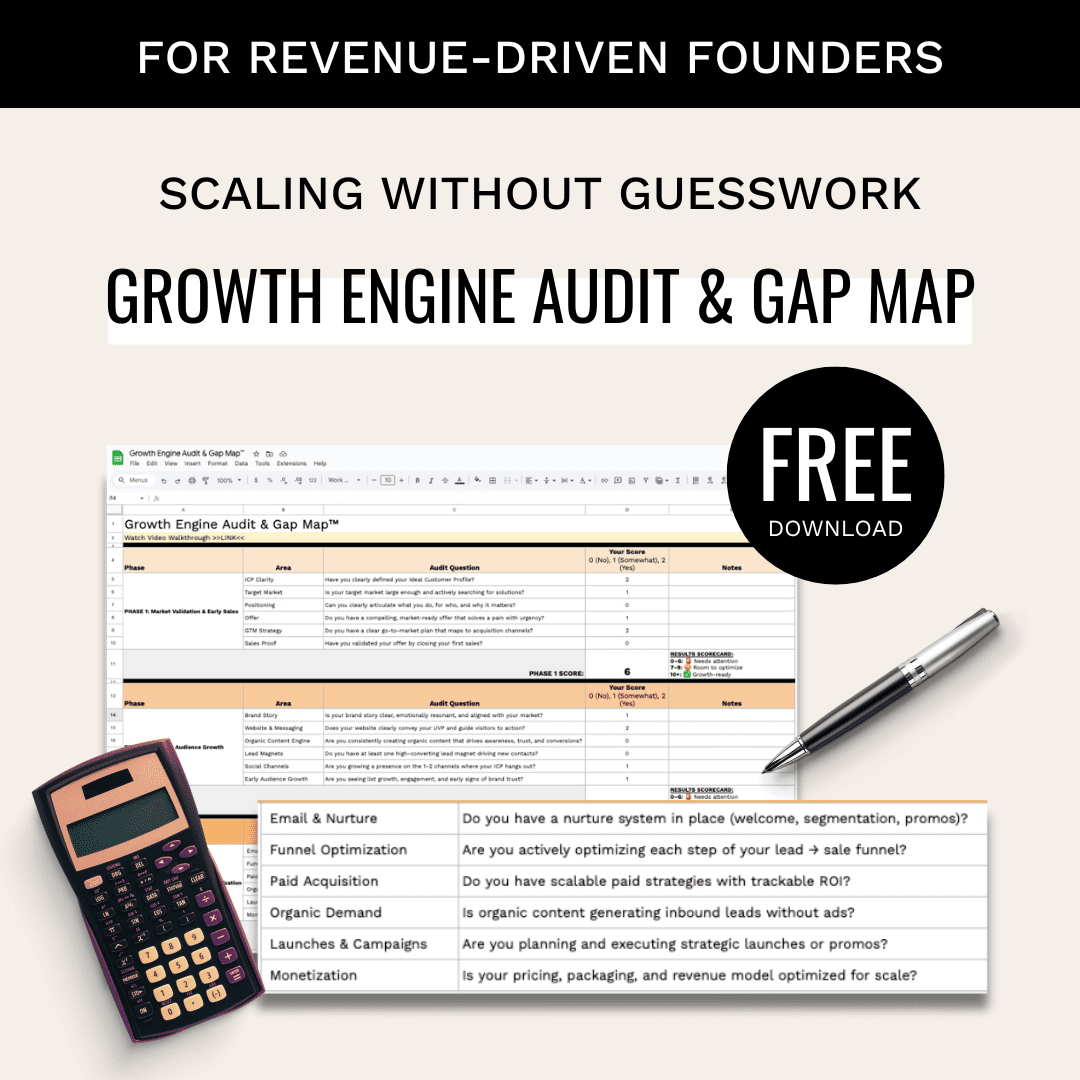Struggling to track your B2B marketing performance across multiple channels? Choosing the right cross-channel attribution tool can help you measure ROI, allocate budgets effectively, and understand the buyer’s journey. Here’s a quick guide to get started:
- Key Features to Look For:
- Multi-touch attribution models (e.g., first-touch, last-touch, custom).
- Account-Based Marketing (ABM) tracking for B2B sales cycles.
- AI-driven insights for smarter decisions.
- Seamless integration with CRMs like Salesforce or HubSpot.
- Top Tools to Consider:
- Quick Setup Tips:
- Map your current tools and identify data silos.
- Define metrics like lead quality and channel ROI.
- Ensure clean, consistent data for accurate insights.
Comparison Table:
| Tool | Starting Price | CRM Integration | Attribution Models | Best For |
|---|---|---|---|---|
| HubSpot | $800/month | Native CRM | Basic to advanced | SMBs |
| Marketo | $1,195/month | Salesforce/MS Dynamics | Advanced | Enterprises |
| Bizible | Custom pricing | Multiple CRMs | AI-powered | Data-driven organizations |
Ready to optimize your marketing efforts? Dive into the full article for detailed tips on selecting, implementing, and maximizing your attribution tool.
What Is Attribution Modeling? A Quick Explainer for Marketers
How to Determine Your Attribution Tool Requirements
To pick the right attribution tool, start by evaluating your current setup and identifying what your business truly needs.
Review Your Current Marketing Tools
Take stock of your marketing tools and identify where they fall short – like missing offline conversions. Look for solutions that can fill these gaps. Mapping out your data flow will help you spot integration issues and any data silos.
"Understanding the customer journey is key to effective attribution." – Lillian Pierson, Founder of Data-Mania
Define Key Marketing Metrics
Establish measurable metrics that align with your business goals. Focus on areas like lead quality (e.g., MQL to SQL ratio), pipeline impact (e.g., sales cycle length), and channel performance (e.g., ROI by channel). These metrics will guide your marketing efforts toward driving revenue.
Once you’ve reviewed your tools and data flow, decide which metrics matter most for your business success.
Evaluate Tool Integration Needs
Now that you know your metrics, ensure your chosen attribution tool works well with your current systems.
Look for tools with strong API compatibility, automated data syncing, and real-time processing. For instance, if Salesforce is your CRM, choose a tool with native Salesforce integration to keep data accurate and reduce manual work.
If you’re a B2B company with a long sales cycle, consider tools that can track online and offline interactions. GA4’s machine learning features can help by automatically analyzing customer journeys across multiple touchpoints.
Must-Have Features in B2B Attribution Tools
After identifying your needs, it’s time to focus on the key features your attribution tool should include.
Multi-Touch Attribution Options
B2B sales often involve long cycles with multiple channels and touchpoints. To keep up with these intricate journeys, your tool needs to support various attribution models. Look for options like first-touch, last-touch, and custom multi-touch models. These allow you to track and analyze different customer paths effectively. For example, tools like Dreamdata and Factors.AI excel in offering flexible models tailored to the unique demands of B2B sales cycles.
ABM Tracking Features
If your business relies on Account-Based Marketing (ABM), tracking multiple stakeholders within an account is critical. The right tool should deliver account-level tracking, role-specific insights, cross-device attribution, and company IP tracking. These features enable you to map out the full buying journey across all decision-makers.
"Understanding the complete account journey, from first touch to final decision, requires sophisticated tracking across multiple stakeholders and channels. This is where advanced ABM features become crucial for accurate attribution." – From Attribution Tool Implementation Guide
Reporting and AI Analysis Tools
AI-driven attribution tools can provide predictive insights that guide smarter decisions. Look for features like real-time dashboards, custom reporting, predictive analytics, and integration tracking. Tools such as Adobe Analytics and Demandbase leverage AI to analyze historical data patterns, helping you allocate budgets more effectively across channels. This allows marketing teams to make informed choices about where to focus their efforts and resources.
With these features in mind, you’re ready to compare top attribution tools and choose the one that fits your business best.
sbb-itb-e8c8399
B2B Attribution Tool Comparison
Top Tools Overview
When it comes to B2B attribution, three platforms lead the way. HubSpot stands out with its easy-to-use tools and built-in CRM, making it a great fit for small to medium-sized businesses (SMBs). Marketo is tailored for enterprises, offering advanced automation and over 550 integration options. Meanwhile, Bizible focuses on AI-driven analytics and detailed touchpoint tracking, perfect for data-heavy organizations.
Each platform caters to specific needs. HubSpot is ideal for growing companies looking for an all-in-one solution with an intuitive interface. Marketo shines in managing complex marketing operations and enterprise-level automation. Bizible excels in delivering precise tracking and revenue attribution, powered by AI.
"HubSpot provides you with a versatile kit of tools for inbound marketing, sales, and customer service, while Marketo specializes in marketing intelligence and automation." – monday.com Blog
Price and Feature Comparison
Here’s a quick breakdown of the core features and pricing for these platforms:
| Feature | HubSpot | Marketo | Bizible |
|---|---|---|---|
| Starting Price | $800/month (Professional) | $1,195/month | Custom pricing |
| Attribution Models | Basic to advanced | Advanced | AI-powered |
| CRM Integration | Native CRM | Salesforce & MS Dynamics | Multiple CRM support |
| Automation | Visual builder | Complex campaigns | Advanced workflows |
| Best For | SMBs | Enterprise | Data-driven organizations |
Performance data highlights each tool’s strengths: HubSpot users report a 20% boost in conversion rates, Marketo implementations enhance marketing efficiency by 15%, and Bizible delivers 25% more accurate attribution tracking.
According to DiGGrowth, 70% of CMOs prioritize measuring sales and revenue impact. Choosing the right tool depends on your company’s size, technical expertise, and attribution needs. For intricate ABM campaigns, Bizible offers comprehensive tracking. If you’re seeking a solution with seamless CRM integration, HubSpot provides excellent value for growing businesses.
After picking the right platform, the next step is ensuring smooth implementation to get the most out of your investment.
Setting Up and Using Your Attribution Tool
Tool Setup Guide
Getting your B2B attribution tool up and running involves connecting it to your existing marketing platforms and CRM systems. For users of GA4, the platform utilizes machine learning to assign credit across channels, simplifying the initial setup process.
Steps to Integrate:
- Link all data sources, including your CRM, marketing platforms, and website analytics, and configure tracking parameters for each channel.
- Define custom conversion goals tailored to your business needs.
- Add tracking codes to your digital properties to capture relevant data.
Make sure your team is familiar with the tool’s features and uses any available setup guides for a smooth implementation.
Data Quality Guidelines
High-quality data is key to accurate attribution. Conduct regular audits to address issues such as duplicate contacts, internal traffic filtering, UTM parameter validation, and source verification. Keeping your data clean ensures reliable insights from your tool.
Performance Monitoring Tips
Once your data is in order, focus on monitoring your tool’s performance to ensure it delivers actionable insights.
| Metric Type | What to Track | Frequency |
|---|---|---|
| Data Accuracy | Source matching rate, Integration uptime | Weekly |
| Attribution Quality | Model confidence score | Monthly |
Platforms like CAKE and LeadsRx offer real-time dashboards to track campaign performance. Keep an eye on metrics like ROAS and conversion rates to evaluate your attribution model’s effectiveness.
AI-powered tools, such as Improvado Attribution, can help you spot trends, fine-tune channel strategies, and uncover deeper insights. Regularly reviewing these metrics will help your tool remain a valuable asset for guiding marketing decisions.
Conclusion: Steps to Pick the Right Attribution Tool
Once you’ve compared tools and found one that fits your needs, the next step is making sure it’s implemented effectively for long-term success. Choosing a B2B attribution tool requires a thoughtful approach that aligns with your business objectives.
Evaluate Your Needs
Start by reviewing your current marketing stack and identifying metrics that matter most for your B2B goals. The tool you choose should work smoothly with your existing platforms and support your specific marketing objectives. For example, tools like LeadsRx and Improvado Attribution are known for their strong integration with popular B2B marketing systems.
Check the Features
Focus on the features that are most important for B2B marketing:
| Feature Category | Key Requirements |
|---|---|
| Attribution Models | Supports multi-touch attribution |
| ABM Capabilities | Tracks at the account level |
| Analytics | Offers AI-driven insights and reporting |
| Integration | Connects with CRM and marketing platforms |
Once you’re satisfied with the features, it’s time to plan a smooth implementation.
Plan the Implementation
Setting up the tool correctly and maintaining it is essential for success. Establish clear data quality standards and monitor performance regularly. As highlighted in the Data Quality Guidelines section, clean and accurate data is the backbone of reliable insights.
"High-quality data is crucial for accurate attribution. Companies should ensure that their data collection processes are robust and that they regularly audit their data for completeness and accuracy."
Finally, think about scalability and how the tool will meet your future needs.
Related Blog Posts
- Collaborative Lead Scoring for B2B Teams
- How Data Improves ABM Segmentation ROI
- 10 A/B Testing Tips for B2B Campaigns
- How Co-Marketing Boosts B2B Tech Partnerships




